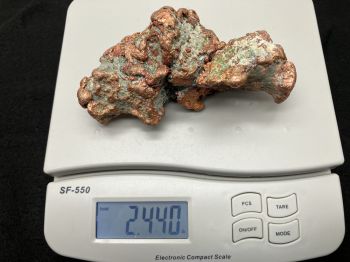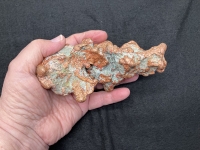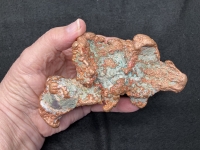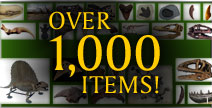
Native Copper, Spectacular Cabinet Specimen Michigan
2.44 Pounds 1007 Grams
5.5 inches long x 3.25 inches high x 2.75 inches wide
Native copper is an uncombined form of copper that occurs as a natural mineral. Copper is one of the few metallic elements to occur in native form, although it most commonly occurs in oxidized states and mixed with other elements. Native copper was an important ore of copper in historic times and was used by pre-historic peoples.
Native copper occurs rarely as isometric cubic and octahedral crystals, but more typically as irregular masses and fracture fillings. It has a reddish, orangish, and/or brownish color on fresh surfaces, but typically is weathered and coated with a green tarnish of copper carbonate (also known as patina or verdigris). Its specific gravity is 8.9 and its hardness is 2.5–3.
The mines of the Keweenaw native copper deposits of Upper Michigan were major copper producers in the 19th and early 20th centuries and are the largest deposits of native copper in the world. Native Americans mined copper on a small scale at this and many other locations, and evidence exists of copper trading routes throughout North America among native peoples, proven by isotopic analysis. The first commercial mines in the Keweenaw Peninsula (which is nicknamed the "Copper Country" and "Copper Island") opened in the 1840s. Isle Royale in western Lake Superior was also a site of many tons of native copper. Some of it was extracted by native peoples, but only one of several commercial attempts at mining turned a profit there. An archived record of native copper originally found upriver from Lake Superior, on the west branch of the Ontonagon River, via being dragged by a glacier.
Native Copper
5.5x3.5x2.75 inches
Item 4004
Category: Minerals
Class: Not Specified
MORE PHOTOS:




Now Over 1,000 Items!
PrehistoricStore.com offers the largest selection of replica fossils and other fossil-related products anywhere in the world!
Download a Full Catalog (3MB PDF)
OVER 260 PAGES OF REPLICAS AND MORE!
